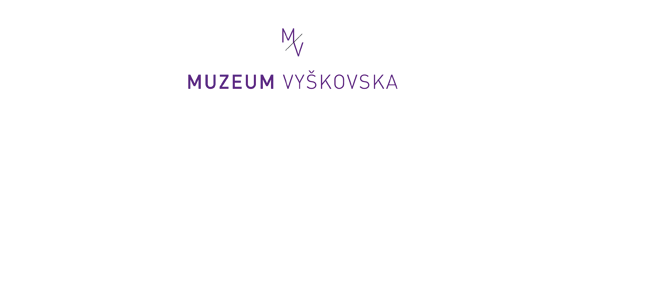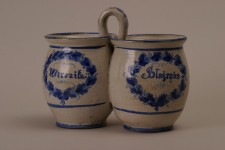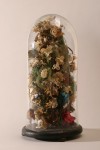Ethnographic sub-collection
At present, the ethnographic sub-collection of the Museum of the Vyškov Region comprises more than 5,900 pieces. The largest and most important collection is the collection of Vyškov faience; together with other ceramic products, it contains over 1,800 pieces. The second largest collection is fabrics. In addition to the preserved fabrics from the Vyškov Region from the 19th century, one of the most valuable pieces is the Haná embroidery from the collections of priest Jan Vyhlídal, and clothing items from the former German linguistic enclave are also represented. The collection also contains items related to crafts, household supplies, and small devotional prints. Art culture is inconsistently represented in the ethnographic sub-collection by underpaintings on glass, sculptures, Easter eggs, etc. Recently, a large collection of Easter eggs by Marie Pachtová, a native of Vyškov, has been acquired. Less numerous collections in the ethnographic sub-collection include farming tools, religious objects, furniture, and traditional folk culture. Most of the collection items come from the area around Vyškov in the former Vyškov District. The collection also contains items from other parts of Moravia, especially Central Moravia, and occasionally also objects of Czech and Slovak provenance. The objects from Alois Musil’s estate, a prominent Arabist and theologist, which he brought from the Middle East, stand out from the rest of the sub-collection in terms of their place of origin.




